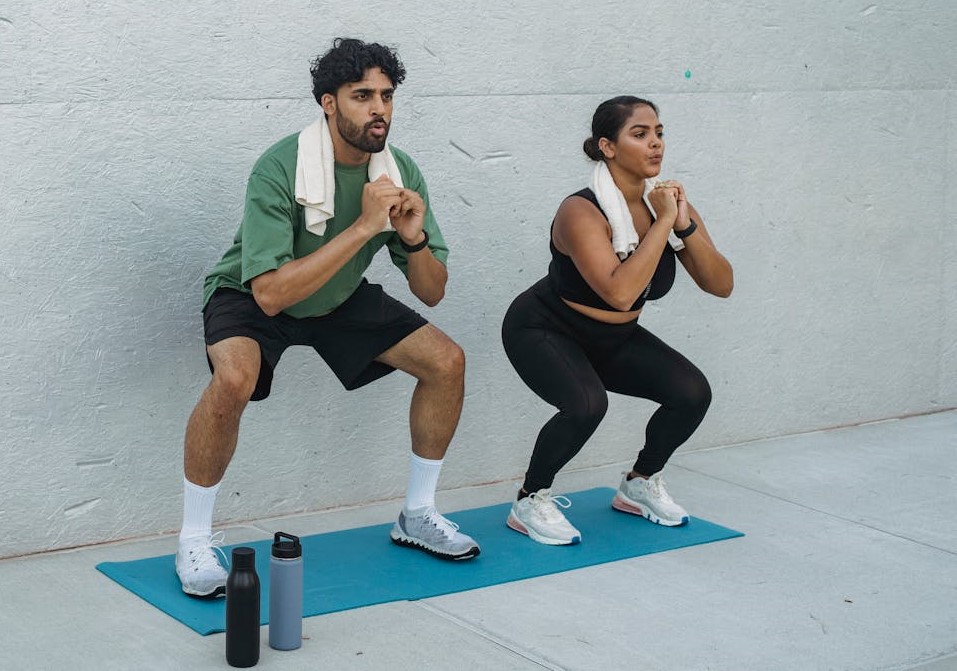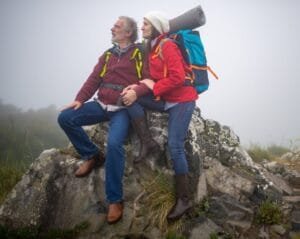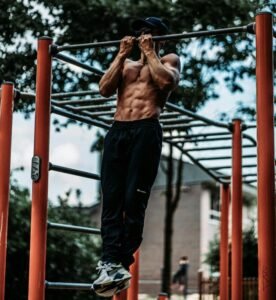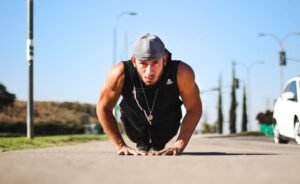Last Updated on October 3, 2025 by shawnshealth
Discover 7 powerful leg exercises without weights to build strength, improve flexibility, and boost endurance—no equipment needed.
7 Powerful Leg Exercises Without Weights for Ultimate Strength
For leg exercises without weights, when it comes to building leg strength and improving overall fitness, you don’t always need weights or gym equipment. Whether you’re at home, outdoors, or just looking to mix up your routine, leg exercises without weights can be just as effective. These exercises help enhance muscle tone, increase flexibility, and improve endurance—all while being kind on your joints. Continue reading this short article for a breakdown of seven powerful leg exercises without weights that will push you towards ultimate strength.
🛒 Quick Tip: Looking for fitness gear? Browse top-rated equipment on Amazon to power up your workouts fast 💪
As an Amazon Associate, I earn from qualifying purchases. This means I may receive a commission if you purchase through links on this site, at no extra cost to you.
1. Why should you do leg workouts without weights?
Leg workouts without weights are effective because they:
- Build strength using your own bodyweight
- Improve balance, mobility, and coordination
- Require no gym or equipment
- Are low-impact and joint-friendly
- Can be done anywhere, anytime
2. Can you build leg strength without weights?
Yes, you can build leg strength without weights by:
- Using bodyweight resistance exercises
- Increasing reps or time under tension
- Focusing on proper form and full range of motion
- Adding explosive movements like jump squats or lunge jumps
- Training consistently
3. What are the benefits of leg exercises without weights?
Leg exercises without weights offer several benefits:
- Improve muscle tone and strength
- Increase flexibility and balance
- Reduce joint stress
- Require no equipment
- Can be done anywhere
Table of Contents
Medical Disclaimer: This content is for informational purposes only. Consult a healthcare professional before making any health or fitness changes.
Amazon Affiliate Disclaimer: As an Amazon Associate, I earn from qualifying purchases.
Author’s Note: The Power of Consistency and Patience
When it comes to leg exercises without weights (or any fitness journey, really), the key to long-term success is consistency. It’s easy to get caught up in the idea of pushing hard for fast results, but the truth is that slow and steady progress is more sustainable and ultimately more rewarding.
Remember, consistency beats intensity. It’s not about doing the hardest workouts every time or trying to lift the heaviest weights right out of the gate. Instead, focus on showing up regularly and making incremental progress. Small improvements, day by day, lead to big changes over time.
Don’t rush your journey—take as much time as you need for progression. Building strength and endurance takes time, and there will be days when it feels like you’re not moving forward. That’s normal. The key is persistence. Every rep, every set, every workout is an investment in your long-term fitness. Keep challenging yourself within your current limits and celebrate those small wins. Over time, those will turn into bigger accomplishments.
Be patient with yourself, trust the process, and remember that progress is not linear—it’s all about steady, consistent effort.
Check out Hampton from Hybrid Calisthenics who has some great advice for bodyweight leg training!
Bodyweight Leg Exercises Programming: How to Structure Your Workouts
Designing an effective program for bodyweight leg exercises doesn’t require fancy equipment—it just needs smart planning. Whether you’re training at home, outdoors, or squeezing in a quick session during your lunch break, a well-structured routine can yield serious strength and endurance gains.
Frequency: How Often Should You Train?
For most people, 2–3 times per week is ideal for bodyweight leg training. This allows for enough stimulus to build strength and endurance while giving your muscles time to recover.
- Beginners: 2 sessions per week
- Intermediate to Advanced: 3 sessions per week, with varied intensity
Tip: Avoid training legs on consecutive days to allow for proper recovery.
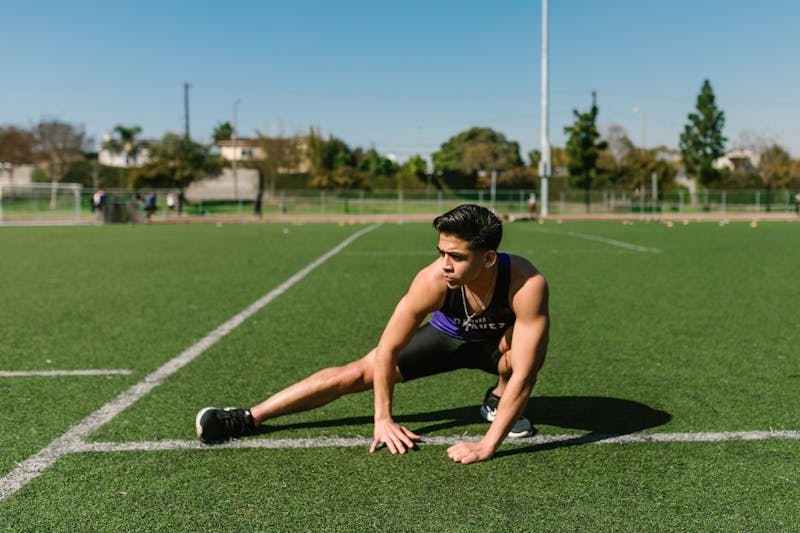
Sets and Reps Guide
Since you’re not using external weights, volume (total reps and sets) becomes especially important for building muscle and endurance.
| Goal | Sets | Reps | Rest |
|---|---|---|---|
| Endurance | 2–4 | 15–25 | 30–60 sec |
| Strength | 3–5 | 8–12 (slower tempo) | 60–90 sec |
| Power | 3–4 | 6–10 (explosive moves) | 90–120 sec |
Pro Tip: Increase intensity by adding tempo (slowing down the lowering phase), pausing at the bottom, or progressing to more advanced variations.
Pairing with Upper Body Training
To create a balanced routine, alternate lower body and upper body days, or combine them into full-body sessions.
Example Weekly Split:
- Monday: Lower Body (Leg Focus)
- Tuesday: Upper Body (Push-Ups, Pull-Ups, Core)
- Wednesday: Rest or Light Cardio
- Thursday: Full Body (Mix upper and lower)
- Friday: Lower Body
- Saturday/Sunday: Rest or Active Recovery (walking, stretching, yoga)
Superset Format (for full-body days):
- Pair 1: Squats + Push-Ups
- Pair 2: Glute Bridges + Plank Rows
- Pair 3: Step-Ups + Dips
This format saves time and keeps the intensity high while training both strength and endurance.
💪 Want a smarter way to train? Check out our article on 👉 Push, Pull, Leg workouts—a proven split that builds strength, balance, and muscle across your entire body. 🏋️♂️
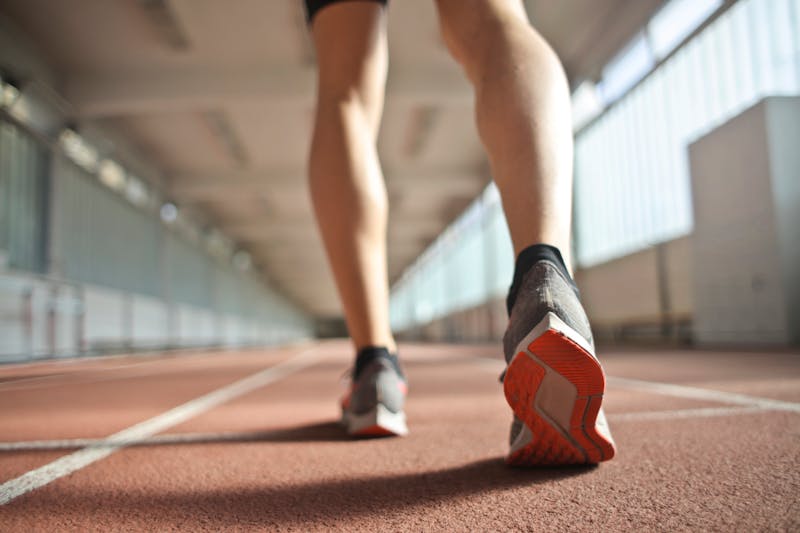
Progressive Overload Without Weights
Even without added resistance, you can continue making progress by:
- Increasing reps and sets gradually
- Reducing rest time between sets
- Advancing to harder variations (e.g., split squats → jumping lunges)
- Tracking your workouts for consistency
Including a mix of bodyweight leg exercises in your weekly routine is not only convenient, it’s highly effective. And when paired with smart upper body training, it lays the foundation for total-body fitness and long-term strength.
🔥 Want to Burn Fat Without Equipment? Ready to turn up the intensity? Try our Bodyweight Workout for Weight Loss—five fat-burning routines designed to boost metabolism and shed weight, all without a single dumbbell.
The Exercises:
1. Bodyweight Squats
Bodyweight squats are one of the most effective exercises to target your quadriceps, hamstrings, glutes, and calves. This simple yet powerful movement can be done anywhere and will help improve your balance, coordination, and lower body strength.
How to Perform:
- Stand with your feet shoulder-width apart.
- Lower your body by bending your knees and pushing your hips back, as if sitting in a chair.
- Keep your chest lifted and back straight.
- Lower down until your thighs are parallel to the ground or as far as you comfortably can.
- Push through your heels to return to the starting position.
Benefits: Improves overall leg strength, tones muscles, and boosts endurance.
🏋️♀️ Want to master your squat form? Check out 👉 Nerd Fitness’s guide on How to Squat Properly—a step-by-step breakdown that helps you build strength safely and avoid common mistakes.
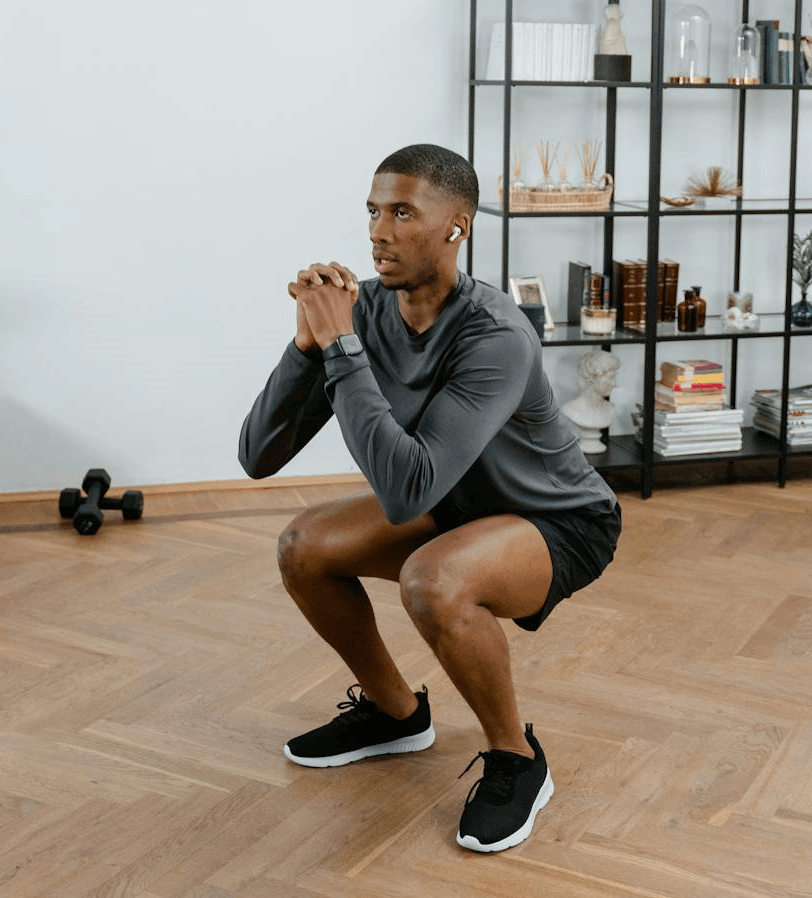
2. Lunges
Lunges are an excellent unilateral exercise that works each leg individually, promoting symmetry and balance. They target the quadriceps, hamstrings, and glutes and can also help increase stability.
How to Perform:
- Stand with your feet hip-width apart.
- Take a large step forward with one leg and lower your hips until both knees are bent at 90 degrees.
- Keep your torso upright, and ensure your front knee does not extend beyond your toes.
- Push through your front heel to return to the starting position.
- Alternate legs and repeat.
Benefits: Strengthens individual legs, improves balance, and tones glutes and quads.
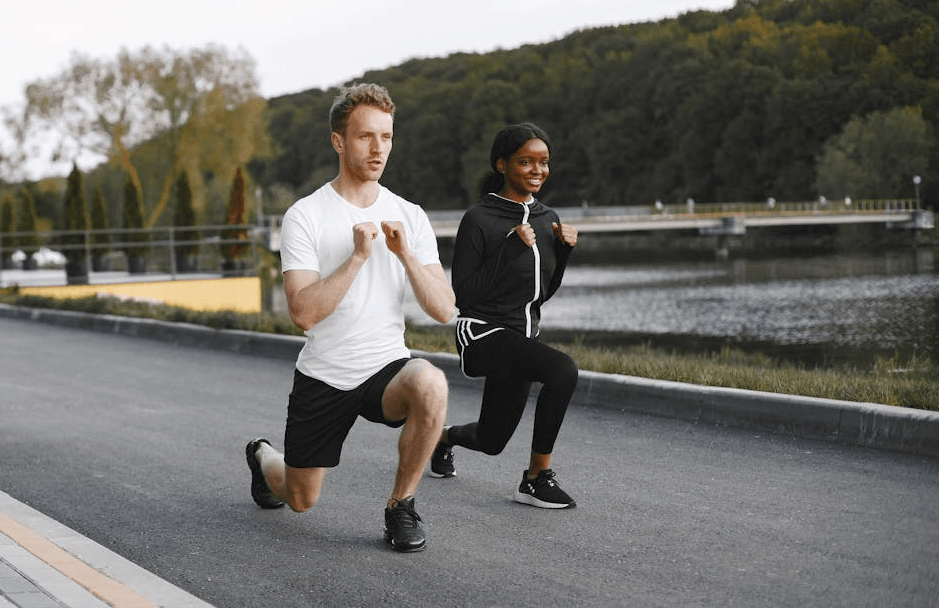
3. Step-Ups
Step-ups are a simple yet powerful exercise that mimics the motion of climbing stairs. This movement targets your quadriceps, hamstrings, and glutes, providing an effective lower body workout.
How to Perform:
- Find a sturdy bench, platform, or step.
- Step up with your right foot, pressing through your heel.
- Bring your left foot up to meet your right foot.
- Step down with your right foot first, followed by your left.
- Repeat the movement, alternating your lead foot.
Benefits: Builds leg strength, improves coordination, and boosts cardiovascular health.
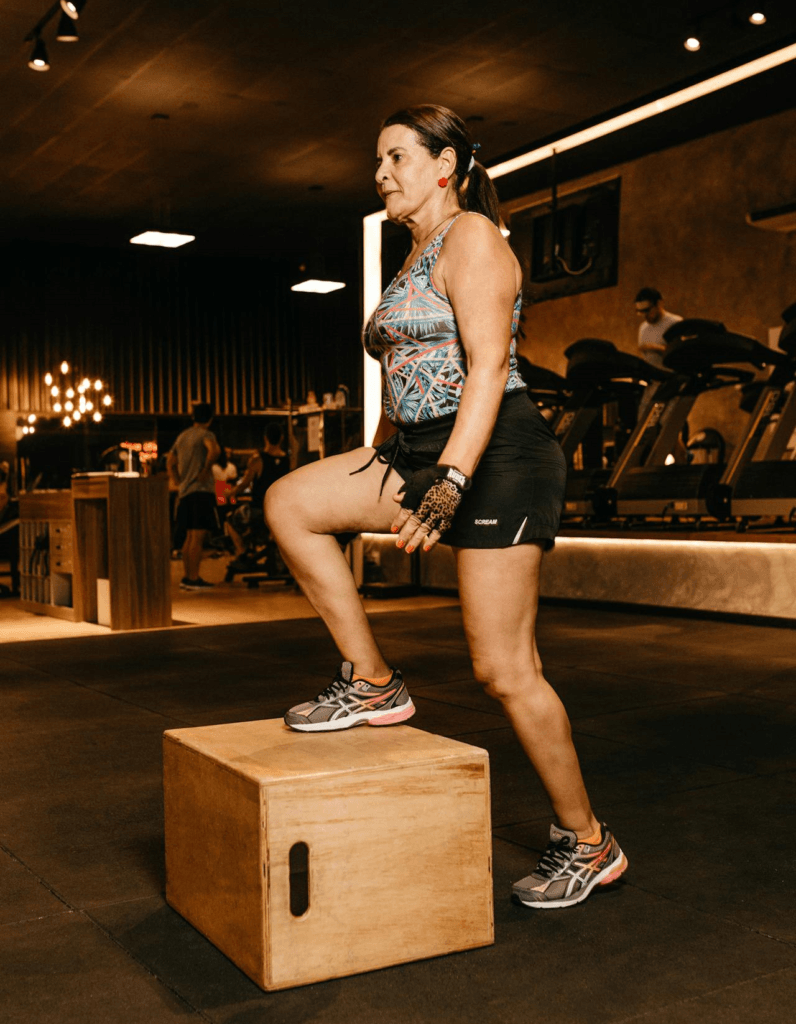
4. Glute Bridges
The glute bridge is a great exercise for targeting your glutes and hamstrings, while also engaging your lower back and core. This exercise can help with improving posture and hip stability.
How to Perform:
- Lie on your back with your knees bent and feet flat on the floor, hip-width apart.
- Press your heels into the floor and lift your hips toward the ceiling, squeezing your glutes at the top.
- Hold for a second before slowly lowering your hips back to the floor.
- Repeat the movement.
Benefits: Strengthens the glutes, hamstrings, and lower back, and improves posture.

5. Wall Sits
Wall sits are an isometric exercise that targets the quadriceps and helps build endurance. They’re incredibly effective for burning out the leg muscles and increasing strength over time.
How to Perform:
- Stand with your back against a wall and slide down into a seated position with your thighs parallel to the ground.
- Hold the position for as long as you can, keeping your knees at a 90-degree angle.
- Make sure your feet are flat on the floor, and your back stays against the wall.
Benefits: Increases endurance, strengthens the quadriceps, and improves muscular stamina.
Image shows the use of a weighted ball, but this is not a necessity to really work the legs.
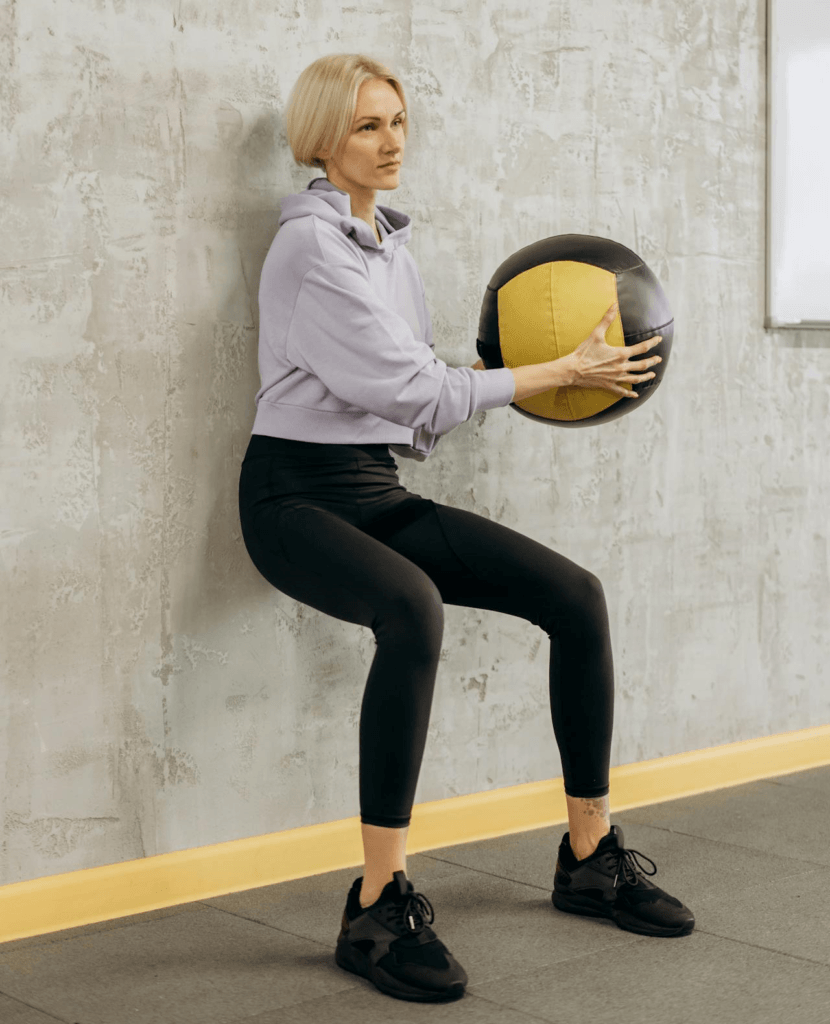
6. Bulgarian Split Squats
The Bulgarian split squat is a challenging leg exercise and is a variation of the regular squat but performed with one foot elevated behind you on a bench or step. This movement isolates your legs, improving strength and stability.
How to Perform:
- Stand facing away from a bench or step, with one foot elevated behind you.
- Lower your hips and bend your front knee, keeping your torso upright and your back knee pointing toward the floor.
- Once your front thigh is parallel to the ground, press through your front heel to rise back up.
Benefits: Focuses on one leg at a time, strengthens quads, hamstrings, and glutes.
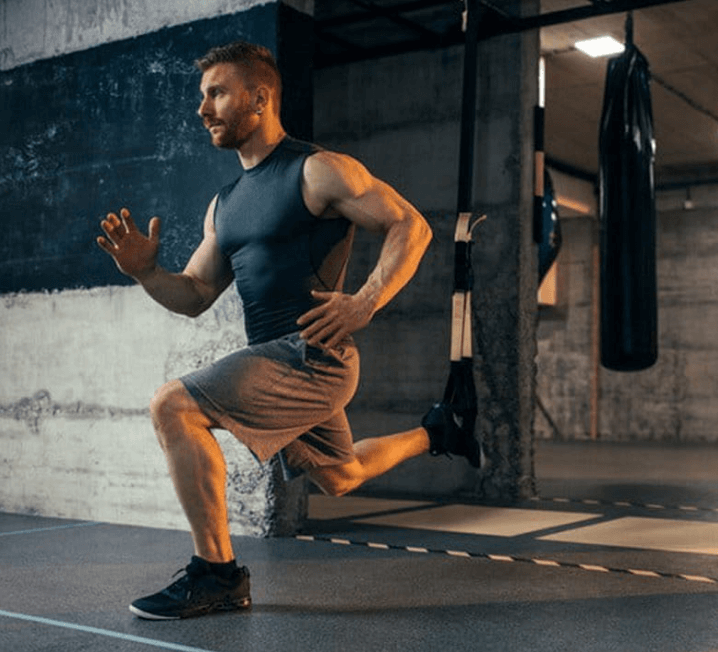
7. Calf Raises
Calf raises are an excellent way to work the calves, improving lower leg strength and enhancing ankle stability. This exercise is simple but effective for toning the calves.
How to Perform:
- Stand with your feet hip-width apart and raise your heels off the ground, balancing on the balls of your feet.
- Hold the position for a moment before slowly lowering your heels back to the ground.
- For added challenge, perform the movement on an elevated surface like a step.
Benefits: Strengthens and tones the calves, improves balance and ankle stability.
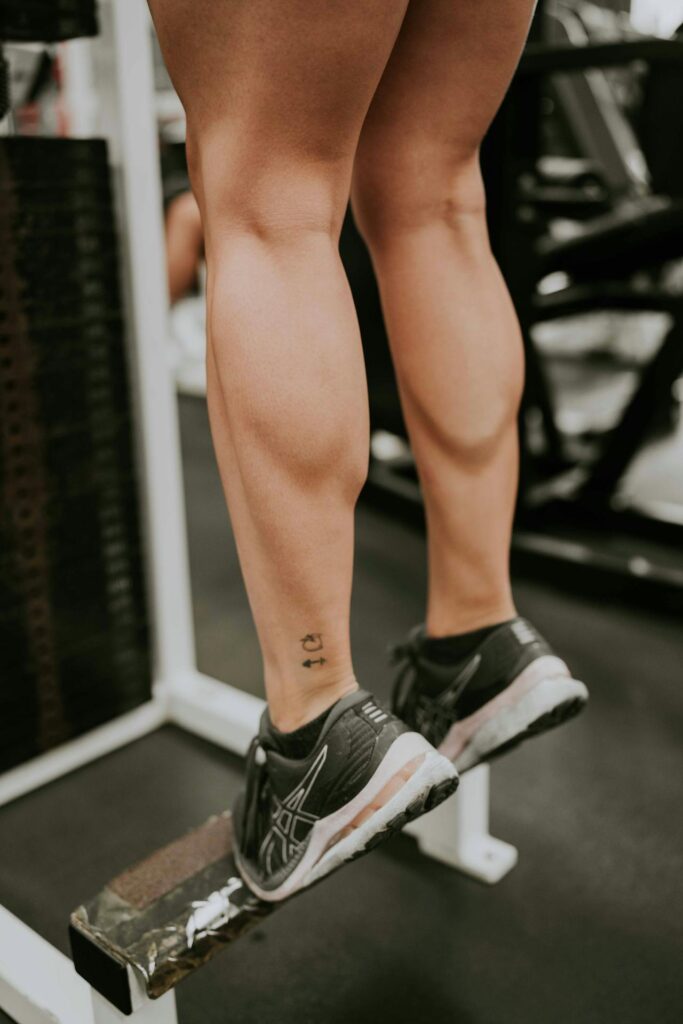
Conclusion
For focusing on leg strength Incorporating these seven leg exercises without weights into your workout routine will help you build ultimate leg strength, increase endurance, and improve overall lower body fitness. Whether you’re at home or outside, these exercises can be done without any equipment, making them incredibly accessible. With consistency, you’ll see noticeable improvements in your strength, stability, and muscle tone.
Remember to focus on proper form, and progressively challenge yourself by increasing the number of reps or holding positions longer. By doing so, you’ll unlock your full leg strength potential!
Want to learn more about bodyweight training? Check out The Ultimate Calisthenics FAQ: Everything You Need to Know About Bodyweight Training for a complete guide to calisthenics, including exercises, tips, and expert advice to help you get stronger and move better.
🧘♂️💪 Ready to boost flexibility and strength? Check out this article on 👉 combining full-body yoga and calisthenics—a smart fusion that builds mobility, control, and functional power without equipment.
🔥 Gear to Help You Achieve Your Health and Fitness Goals 💪
If you’re looking for tools to enhance your fitness journey, check out this. Explore top-rated fitness gear on Amazon to enhance your workouts. Check out the latest picks here! 🛒 to support your workouts and progress.
🚀 Find equipment designed to boost strength, endurance, and overall performance!
⚠️ Short disclaimer: As an Amazon Associate, I earn from qualifying purchases.
People Also Ask
How do leg exercises without weights help build strength?
- They use bodyweight resistance to activate major leg muscles
- Encourage muscle control and endurance
- Improve joint stability and balance
- Allow for progressive overload through reps, tempo, or harder variations
Are bodyweight leg exercises good for beginners?
- Yes, they are low-impact and easy to modify
- Help build a strong foundation for balance and mobility
- Require no equipment or gym access
- Allow beginners to focus on proper form and technique
What muscles do leg exercises without weights target?
- Quadriceps (front of thighs)
- Hamstrings (back of thighs)
- Glutes (butt muscles)
- Calves
- Hip flexors and stabilizers
Can I tone my legs without using weights?
- Yes, consistent bodyweight training can tone and define leg muscles
- High reps and short rest periods increase muscle endurance
- Exercises like squats and lunges build lean muscle mass
- Proper nutrition also plays a key role in muscle tone
How long should a bodyweight leg workout be?
- 15 to 30 minutes is effective for most people
- Beginners can start with 15-minute routines
- Add time as endurance and strength improve
- Focus on quality reps over workout length
What’s a good warm-up before leg exercises?
- March or jog in place (1–2 minutes)
- Bodyweight squats (10–15 reps)
- Leg swings front-to-back and side-to-side
- Lunges with a twist to activate hips and core
Yea, though I walk through the valley of the shadow of death, I will fear no evil, for Thou art with me, Thy rod and thy staff they comfort me. – Psalm 23:4

